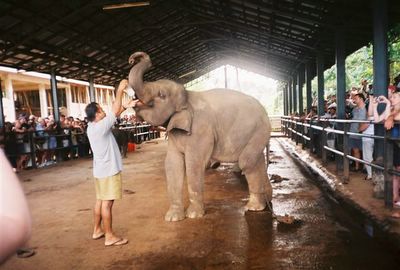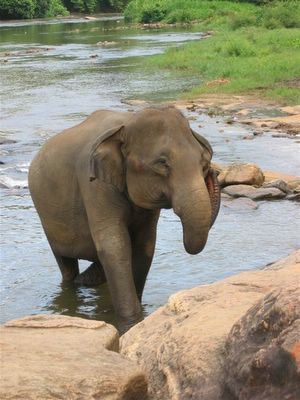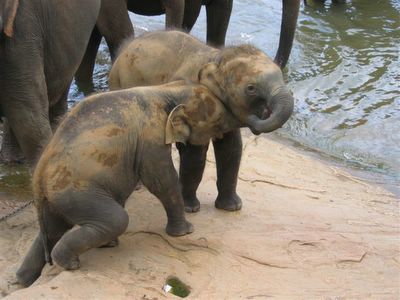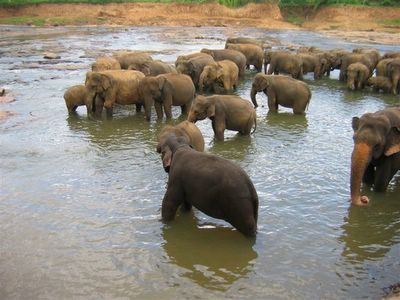
"According to the official figures by the Department of Wildlife, annually an average of 120 elephants die, while 65 human beings are being killed by the elephants. There were 17,000- 18,000 elephants in Sri Lanka in the last century. Now there are only 4,500-5,000 elephants alive in Sri Lanka" says Mr.Jayantha Jeyewardene, Managing Trustee of the Biodiversity & Elephant Conservation Trust.
He further says that, "Elephants used to live in Mullaitivu, Kilinochchi and Mannar before the ethnic conflict started. There are findings as proof. Pannikans were the expert elephant trappers in Mannar. They knew the art to trap elephants without any harm. And after the war started the elephants have begun to move towards the Southern part of Sri Lanka. We found out in the recent past that, there are elephants in pockets of jungles, where no elephants lived earlier. But there are still elephant habitats in the East coast of the country.
The elephants need 35-40 square kilometers to move around. Especially they need more space during the dry season. This is called Home ranges. When a male elephant attends puberty, he is ejected from the herd immediately. After being ejected from the herd, it needs more space to move.
Elephant is such a Majestic animal. But we don't take good care of them. The elephants come and eat polythene in Mannampittya area. They used to come there to eat paddy husk earlier, put by the paddy millers. Now there is no paddy husk, only polythene. It's tragic to witness the elephants eat polythene and die".
Bronx Zoo Says It Won't House Any New Elephants:
Maxine, Patty and Happy are in their mid-30s and likely to live a very long time. But someday, their deaths will precipitate the end of their habitat _ the elephant exhibit at the Bronx Zoo.
The three female Asian pachyderms are in good health, but the zoo will not replace them after they die, said Steve Sanderson, president of the Wildlife Conservation Society, which runs the Bronx Zoo.Once the Bronx Zoo closes its elephant exhibit _ whenever that may be _ New York City will be left with no pachyderm exhibits. The elephant exhibits at the Central Park and Prospect Park zoos, also run by the WCS, were closed the 1980s.
``The thing we want the public to understand is that we have a commitment to these animals,'' Sanderson said Tuesday. ``We're not going to close up and walk away. ... We'll judge that according to their health, their reproductive status, always with their welfare in mind.
''The three elephants could well live another 30 years.
But, Sanderson said, ``We're not going to rebuild the social group'' when Maxine, Patty or Happy die _ a move that would necessitate another 50-year commitment by the zoo.
The $58,000 it spends each year on each elephant could instead be steered to the WCS's elephant conservation work in Asia and Africa, Sanderson said, where it already spends $2 million a year in 10 countries.
He explained that elephants ``are among the most complicated animals socially.'' They thrive on a matriarchal system in which the senior female governs. Tuss, the governing matriarch for Maxine, Patty and Happy, died in 2002 at the age of about 50 or 60. The three elephants showed signs of distress afterward and still have not figured out their internal hierarchy, Sanderson said.




































